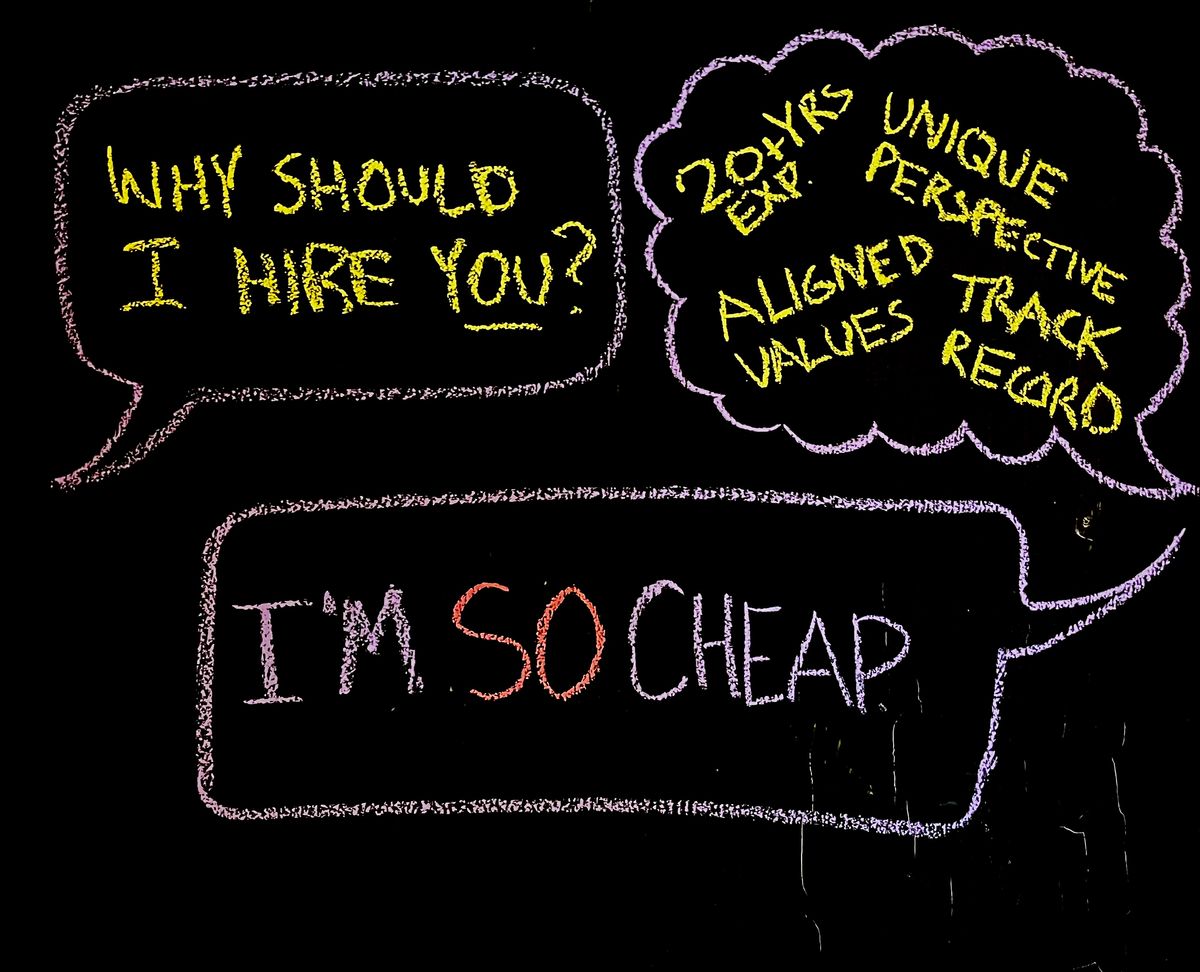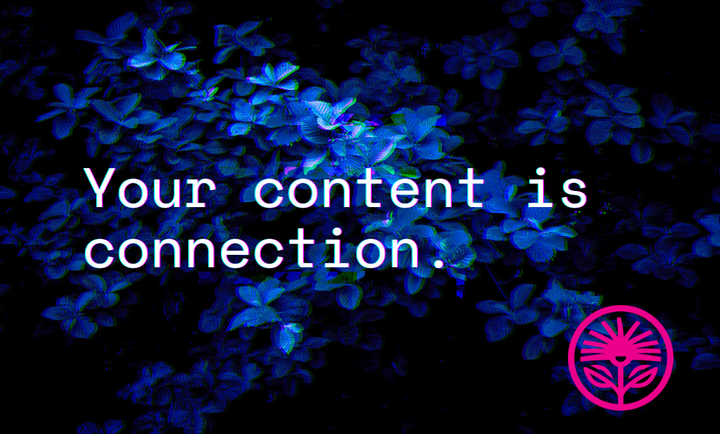Model: Always Know What to Say
All the social media posts, paid ads, press releases, and website redesigns in the world won’t get you profitable customers if you’re not talking to the right person, about the right thing, in the right way, at the right time, in the right place.

Last month at Kelford Labs we talked about the One Big Day fallacy and created a framework to support slow, steady, sustainable and—most importantly—joyful work.
That’s what enables us to do great marketing work for a long time, the goal of most entrepreneurs we work with.
But there’s a natural question that follows out from knowing how to get their marketing done.
What do I do?
But, actually, when we talk to entrepreneurs, they usually already know what the most effective marketing activities are likely to be, and even how to perform them tactically.
The hard part of marketing isn't clicking "Post" or buying the ad.
Most entrepreneurs don’t actually have a problem knowing what to do.
They just don’t know how to talk about what they do.
All the social media posts, paid ads, press releases, and website redesigns in the world won’t get you profitable customers if you’re not talking to the right person, about the right thing, in the right way, at the right time, in the right place.
Conversely, at the end of the day, it really doesn’t matter what you say or how you say it as long as you’re talking to the right person, about the right thing, in the right way, at the right time, in the right place.
So let’s break it down:
1) Who’s your best customer? (Right person)
2) What’s the ultimate thing they’re trying to achieve by way of a business/product like yours? (Right thing)
3) What tradeoffs do you make to benefit them specifically? (Right way)
4) When do they realize they need someone like you to help? (Right time)
5) Where do they go when they look for support or a business like yours? (Right place)
If you have all of that information, and you’re confident about it, you can literally say just about anything as long as you’re saying that, there and then.
Here’s an example. You’re a web designer, and, as you know, design is fairly commoditized. But you’d like to move up the decision stack and focus more on high-end consulting, and less day-to-day production.
You want to know what to talk about now that will get you closer to that end goal.
Let’s say you’re at a networking event, where people expect to meet service providers and potential partners, like a Chamber of Commerce dinner or a trade show (Right place).
You’re making awkward small talk as you ponder how soon you can leave when an extrovert approaches you. Even though you know it’s coming, you’re still unprepared for the question:
“What do you do?”
The easy answer that gets you out of the interaction is to say, “I’m a web designer.” They’ll ask a polite followup question and either pivot the conversation to them or pivot away entirely.
You might end up sharing that you design websites for small businesses, and you’ll even make sure to mention that you have affordable prices. They seem to take special note of only that last part, and the conversation peters out in that familiar way it always does.
Of course, you survived the interaction in one piece, but that’s not the ideal outcome.
Imagine trying something like this instead:
“I’m a specialized web designer—I focus on entrepreneur-led businesses who place a high value on visual impact and marketing efficiency.” (Right thing)
Intrigued, because who doesn’t value that?, they might ask you to explain.
You’ll say,
“I’ll give you an example: I’ll usually have an entrepreneur who’s got a small or medium sized business—you know, under 5 million, something like that—and they’ll say that their website just doesn’t feel right.
They know it 'does the job', technically, kind of, but it doesn’t feel right. Or it’s just so same-y. They usually have something coming up, like a product launch or a trade show, and they just don’t think their website is going to match or exceed the sophistication of their competitive set. So they’re finding their whole marketing is suffering because this site just doesn’t look right.
I help them figure out what kind of website will create that meaningful visual impact for their best customers, and what kind of design is going to make the entrepreneur most motivated to put their full marketing weight behind it—because they know it’s actually doing the right job, super efficiently."
“Sure, sure,” they’ll say. “But how is that different from everyone else?”
“Well, it’s really just a lot more in-depth on the upfront investigative side than a lot of shops (sometimes we’re even called in to just do that upfront bit since it’s where so much of the value is created). But we’re driving at a feeling as well as what’s objectively efficient, so that’s where the big impact is with us. Do you happen to be an entrepreneur? Does that feeling of your website's look holding your marketing back sound at all familiar, or is that weird?” (Right person)
If they’re in your set, they’ll say they understand completely, and so they’ll ask how much you charge.
But instead of saying, “I have competitive prices,” or “It varies,” or “It all depends,” which are the worst answers you could give in the moment, you’re ready for it and you say:
“Well, I’ll admit it’s not cheap, but here’s how I look at it: In our set if you want something super beautiful but also extremely efficient from a marketing standpoint, that’ll run you upwards of [YOUR EXPENSIVE COMPETITORS’ PRICES] at a lot of shops, but that’s often because they’ve got to do rounds and rounds and rounds and rounds of revisions to nail it—and they’ve got big staffs and their own templates and tools to pay down.
But because we figured out what we’re shooting for at the very beginning—that precise sense and experience you want to deliver and what your marketing really requires of your website—we’re usually coming in much closer to the [YOUR HIGH-END] range (sometimes even less than that). And the sites end up being visually appealing for much longer, and easier to update when they stale, because we designed them to be consistent with your values and long-term growth vision for your business. We’d rather be timeless than trendy, you know?”
And that’s where you might leave it, but you haven’t quite told them why to work with you yet. Now’s the opportunity to increase your value by expanding the gap between the effect of your work and its cost by pivoting to non-monetary benefits:
“We also don’t let you go until we’ve trained you to extend your website’s marketing power with additional assets—even if you pay us to make additional graphics for you, we teach you to use the design elements to make things like social media images yourself, so neither of us are ever locked in. That ends up bringing the total multi-year cost down to a fraction of the upfront. Especially if you count headaches, design rot, phone calls, and last-minute rushing as a cost—which I’ll be honest, I definitely do.” (Right way)
Now, it actually doesn’t matter how much you cost, because lots of people would be willing to pay anything for that. And consider this: In this model, it’s actually better for you to have lots of competition. It’s even better for you to have clients that actively work with other designers. Because you’re the only one making this specific set of tradeoffs, which are aligned with your own personal values, interests, and wants for your business.
And now, to wrap it up, you say: “I’m curious, though, does that align with your experience with my industry?”
And now you have a conversation about other things, like the person you’re talking to, what they care about, what they want, what they’re driving for. And what they don’t like about your competitors.
Even if it’s a bad fit or the wrong time, that’s incredibly useful information. Maybe, if it’s a good fit, they’ll become an ideal customer.
But either way, you’ve demonstrated your value in a way they can easily categorize in their own minds, or transmit to another’s.
“Surely it’s not so easy,” you’re thinking. And no, it’s not that easy. But that is an awful lot easier than saying what industry you’re in and walking away, and blaming everything but the way you describe your business for your challenges.
Think about it this way: You’re agonizing over your own marketing, and yet you assume your customers are doing a better job?
No, you’ve got to be so good they can’t mess it up.
Which means being specific. Telling a story. Giving a demonstration. Using examples.
So how did I write that example above? Using the exercise we’re going to show you next week.
Because this month at the lab, all we’re talking about is what to talk about.
See you next week.
Sign up here.



